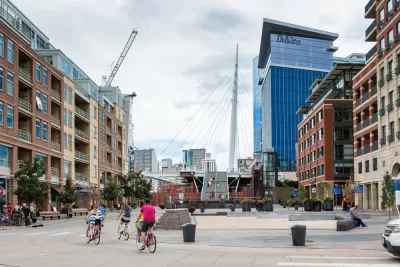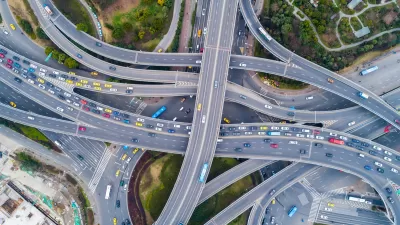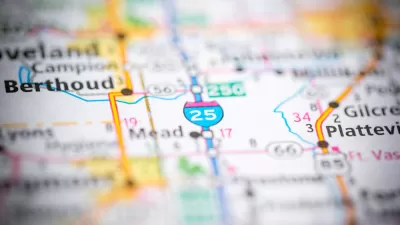A proposed transportation strategy could shift the state’s focus away from driving and toward incentivizing public transit use, walking, and biking.

“After decades of pouring billions of dollars into a transportation system that favors moving vehicles quickly above all else, the Denver region could see a significant funding shift away from road expansions and toward public transit, pedestrian and bicycle infrastructure” if a proposal before the board of the Denver Regional Council of Governments (DRCOG) passes, reports Nathaniel Minor for Colorado Public Radio.
The new plan would ax planned expansions of Interstate 25 and C-470 and cut or minimize similar widenings on smaller roads across the region. It would also move $900 million away from road expansions to fund climate-friendly transportation projects, including projects that would overhaul busy streets to help public buses move faster.
To reduce emissions, Colorado is planning for a shift to electric vehicles and renewable energy. “State officials and climate-minded legislators, urged along by clean transportation experts, are also trying to incentivize Coloradans to drive less by making buses, trains, walking and cycling safer and more convenient — and cutting highway expansions that would likely have attracted more drivers.”
The proposal calls for speeding up five bus rapid transit (BRT) projects, with a new completion date of 2030. These include “East Colfax in Denver and Aurora; East Colfax Extension between I-225 and E-470; Federal Boulevard; Colorado Boulevard; and State Highway 119 between Boulder and Longmont.”
The plan doesn’t eliminate all highway expansions, retaining plans for new toll lanes on Interstate 270, Interstate 25, and Interstate 70, as well as roughly a dozen arterial street expansions.
FULL STORY: Metro Denver set to drop I-25 and C-470 expansions as planners shape climate-minded transportation future

Study: Maui’s Plan to Convert Vacation Rentals to Long-Term Housing Could Cause Nearly $1 Billion Economic Loss
The plan would reduce visitor accommodation by 25,% resulting in 1,900 jobs lost.

North Texas Transit Leaders Tout Benefits of TOD for Growing Region
At a summit focused on transit-oriented development, policymakers discussed how North Texas’ expanded light rail system can serve as a tool for economic growth.

Using Old Oil and Gas Wells for Green Energy Storage
Penn State researchers have found that repurposing abandoned oil and gas wells for geothermal-assisted compressed-air energy storage can boost efficiency, reduce environmental risks, and support clean energy and job transitions.

Santa Barbara Could Build Housing on County Land
County supervisors moved forward a proposal to build workforce housing on two county-owned parcels.

San Mateo Formally Opposes Freeway Project
The city council will send a letter to Caltrans urging the agency to reconsider a plan to expand the 101 through the city of San Mateo.

A Bronx Community Fights to Have its Voice Heard
After organizing and giving input for decades, the community around the Kingsbridge Armory might actually see it redeveloped — and they want to continue to have a say in how it goes.
Urban Design for Planners 1: Software Tools
This six-course series explores essential urban design concepts using open source software and equips planners with the tools they need to participate fully in the urban design process.
Planning for Universal Design
Learn the tools for implementing Universal Design in planning regulations.
Ascent Environmental
Borough of Carlisle
Institute for Housing and Urban Development Studies (IHS)
City of Grandview
Harvard GSD Executive Education
Toledo-Lucas County Plan Commissions
Salt Lake City
NYU Wagner Graduate School of Public Service





























